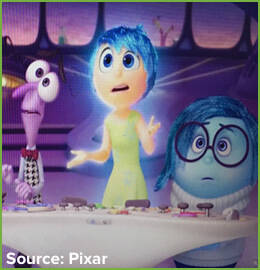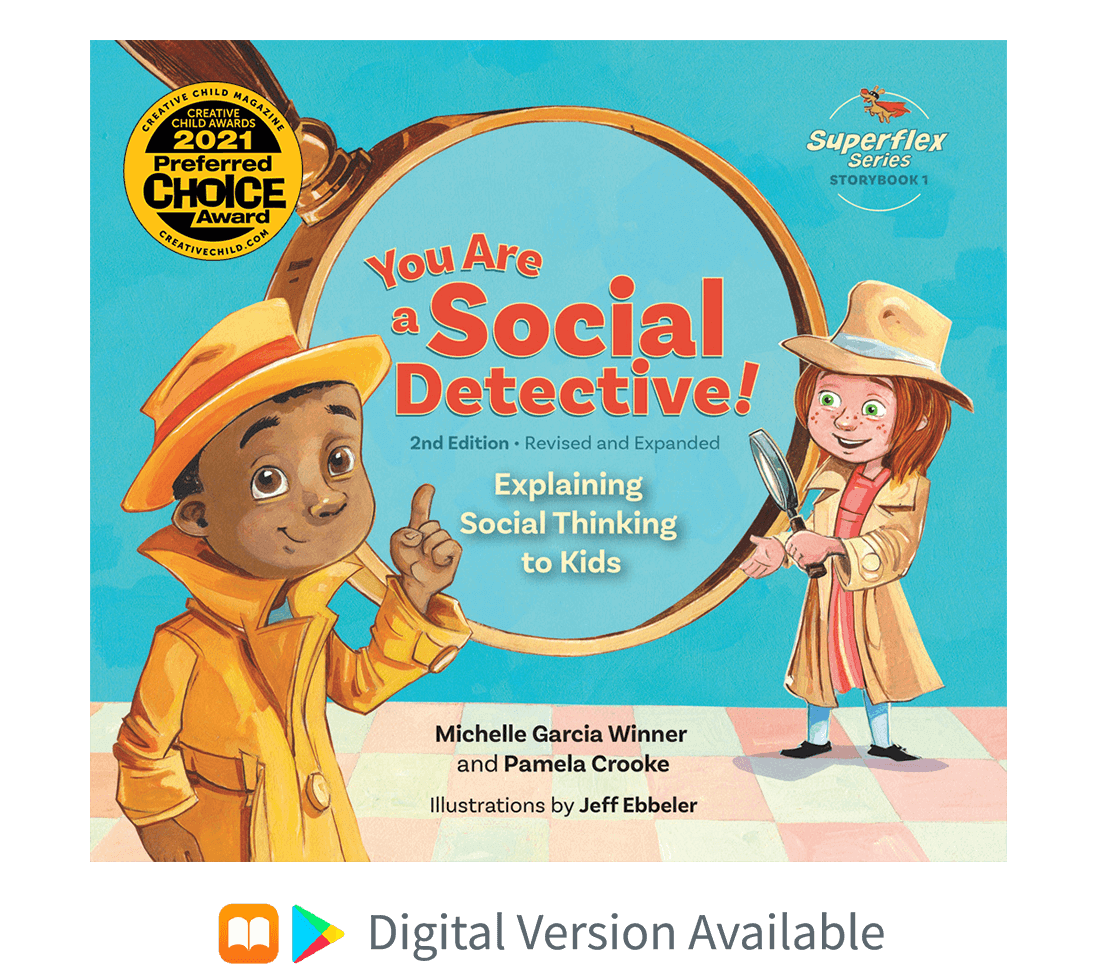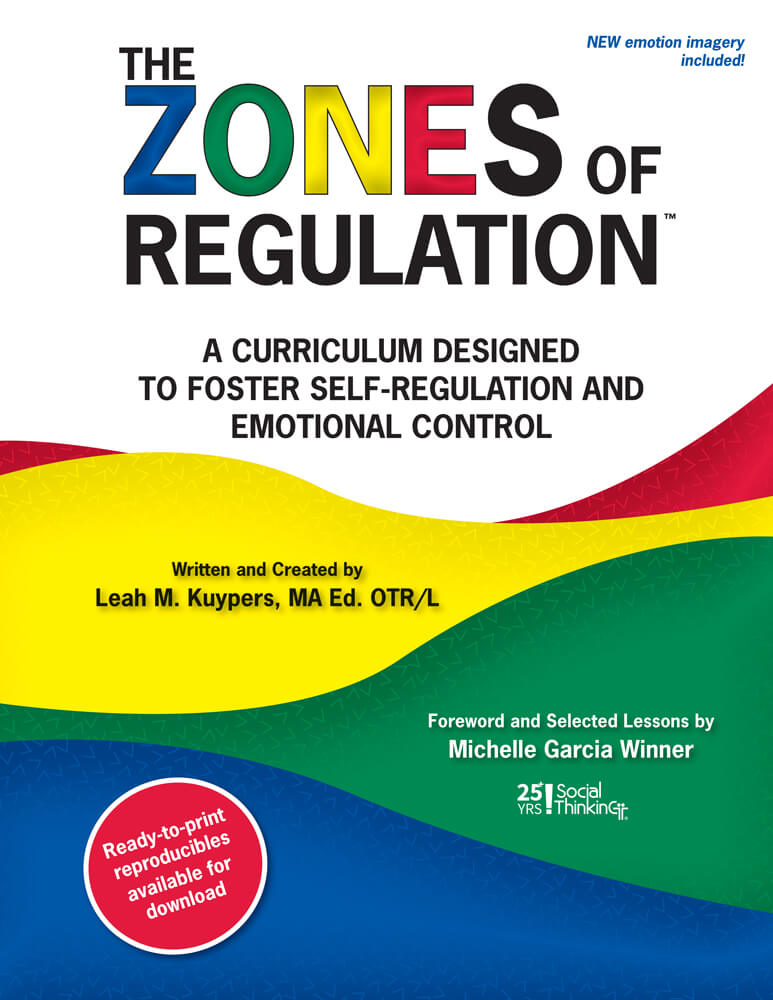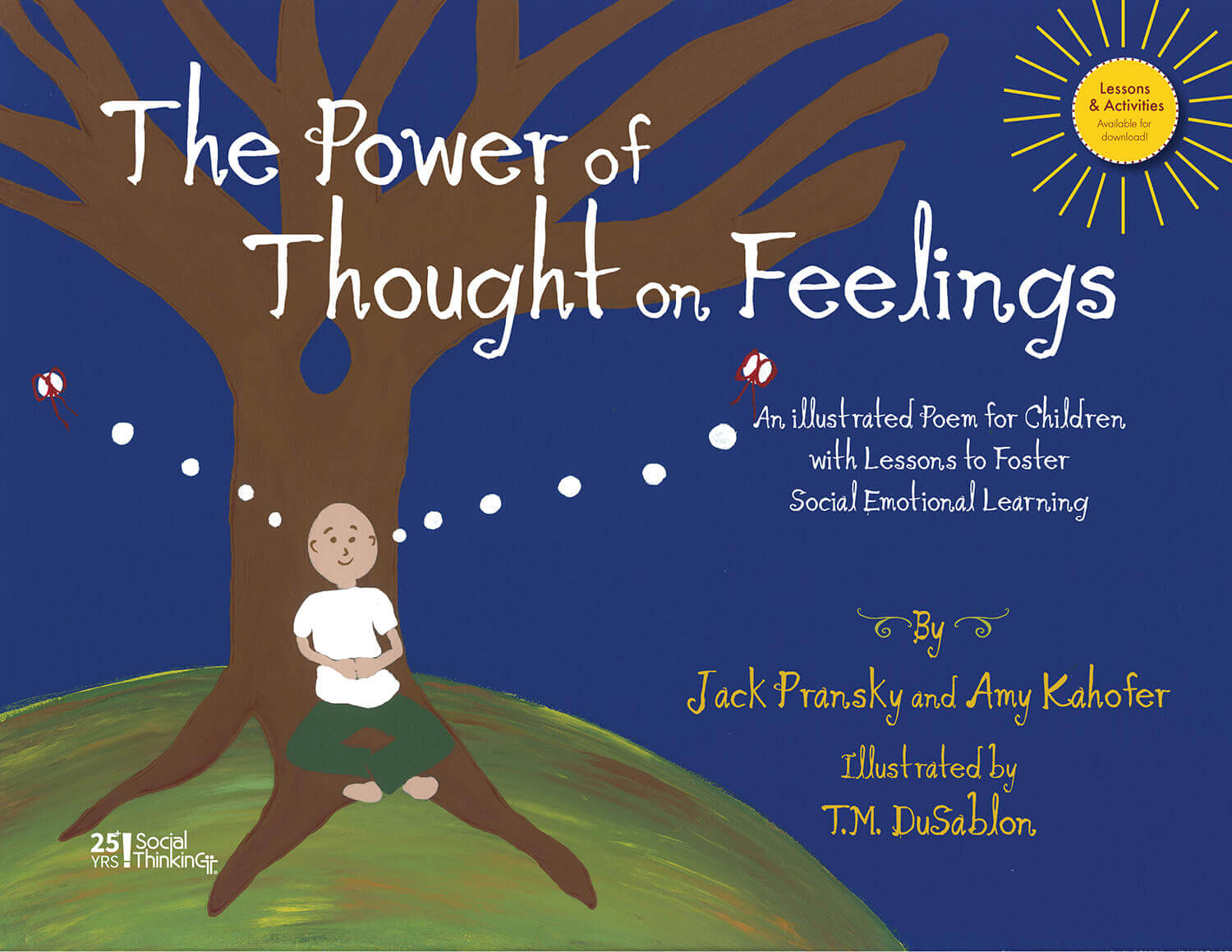© 2021 Think Social Publishing, Inc.
The Disney Pixar movie, Inside Out, has inspired many to think about the idea that what goes on inside our brains is as fascinating as what goes on around us on a daily basis.
The movie encouraged children and adults to talk about the emotions they experience. While I personally did not love this movie (too much chaos in the brain and too little self-awareness and self-control on the part of the 11 year old protagonist, Riley), I did see it as a vehicle for teaching.
Riley’s brain is a featured “character” in the movie, however Riley herself has minimal participation in the film. While the core idea of turning feelings into characters is creative and engaging, the reality is that the message the movie conveys is that Riley’s emotions paired with her memories are taking her on their own journey. At no point does Riley use any other part of her brain to work through her experience of having to move and live in a new town. She’s not using her brain to develop strategies to more effectively manage her very active emotions paired with her memories of the past. Fundamentally, Riley demonstrates many lagging skills in social communication and problem solving.
That said, the movie can be used for developing lessons around social communication and social emotional learning that can help our students. Although the movie’s target market is young elementary school-age children, most of the five lesson ideas that follow are best explored with upper elementary, middle and high school students.
Lesson Idea 1: Identifying feelings
We all have feelings – those sensations that happen on the inside. We feel things sometimes that we can’t describe, even to ourselves. Feelings are complicated and we can have many feelings at once. Even as mature adults we can’t always make sense of our feelings. It’s taken a long time for researchers to prove that even animals have feelings because animals don’t talk, so they can’t tell us about their feelings. We now know from the research that many living things have feelings, even plants!
Several ideas follow to help your students explore their feelings by learning to label them and by recognizing the feelings of others. Help them notice the many ways we communicate our emotions and times when we keep our feelings to ourselves.
- Have students share experiences that show animals have feelings. If the students have experience with pets (cats, dogs, etc.), have them talk about the feelings they think their pets exhibit. Encourage them to also think about other animals: does a fish have feelings? Does a reptile have feelings? If a student doesn’t have experience with a pet, you can use YouTube clips about cats and dogs – cute things they do, etc.
- Babies have feelings that parents have to try to figure out because babies don’t talk. A big part of parenting is trying to figure out how young children feel since they can’t tell us yet. How can we determine what a baby may be feeling? What clues can we look for that show different emotions, such as smiling or laughing if the baby is happy, or crying if the baby is upset.
- It’s expected that preschool and school-age children and adults learn to talk about their feelings. As adults and teachers, we guide children to build an emotional vocabulary to help them make sense of their own feelings and the feelings of others by:
- Recognizing what feelings look like “on the outside” and assigning a word to describe them
- Encouraging children to think about their feelings through using their our inner speech. Self-talk can help build awareness and connection with one’s own feelings: “Wow, I feel sad. What’s going on? Why do I feel this way? Is there anything I can do to help me feel less sad?”
- Using their words to explain their emotions to others. This becomes an important strategy to build stronger social communication skills.
Lesson Idea 2: Initiating communication to share our ideas with others
Riley is dealing with change: her family has to move to a new town and she is feeling a lot of sadness about what she is leaving behind. Riley’s parents try to be upbeat, but Riley feels differently.
- What could Riley say to her parents to let them know what she is experiencing?
- When could she say it?
- How could she say it?
- Why would it help her to say it?
Lesson Idea 3: Explore the benefits of talking about feelings and trying to understand how others have felt in similar situations.
When we talk to each other we don’t just share data or facts; we tell people about our experiences including how we feel. When we can share our emotions about a specific event with other people we help them understand who we are, how we feel and care about things, and how we respond to the world around us. By talking about our emotions we build empathy in ourselves and others. To empathize means we can relate to how another person is feeling. It can be calming to know that other people have felt the same way or gone through things similar to what we’re experiencing. This can make us feel less alone when we have unpleasant feelings of our own.
It’s important for children to know that other people have also felt really sad, really afraid, really confused, etc. Learning how other people feel makes each of us know it’s okay to not feel good all the time!
One of the positive things in the Inside Out movie was the importance it placed on sadness and the idea that we should not try to avoid being sad. Like the other emotions, sadness is a valued member of the team. We can teach our children to better understand why they are feeling negatively and to be secure knowing that it’s okay to feel less than happy. It is lovely to feel joy, but no one feels joyful all the time! Let’s be honest about that with them.
Engage your students in a conversation about how it felt to share their feelings with others. Was it easy or hard? Did it help you to feel calmer or did you notice that when sharing positive emotions it made you feel even better? If they have little experience with this, think about creating time and space for this experience in your class or group. Having a safe place to share and talk about feelings can be beneficial for all your students.
Lesson Idea 4: Explore how we use our inner speech
Riley is pretty quiet throughout the movie as the real action is going on inside her brain. How could she use her “inner speech”—the language we use inside our heads—to help organize her own thinking and make sense of her emotions?
Learning to use our “self-talk” is a valuable strategy that can help us throughout our lives. Some of the many ways we use our inner speech include:
- to help us better understand how we are feeling
- to reflect on memories
- to figure out what is happening around us
- to work through what to do next
For example: in one scene Riley is remembering her friends in her old town. She could have said to herself: “You’re going back to visit them in two months, it will be fun to see them again!” We can use our self-talk to calm our feelings, give us courage, or help us figure out what to say or not say in a situation.
We can also coach ourselves through our feelings and situations using our inner speech. It’s always helpful when we can remind ourselves of solutions or strategies. Riley could have coached herself by saying something like, “I know this feeling of sadness will pass. I made friends before and I will make them again. Tomorrow at school I’m going to try and talk to two kids I don’t know.” Work with your students on how we use our inner speech to help coach ourselves. Some people call “inner speech” an “inner coach.”
There are many lessons offered through cognitive behavioral therapy to help students learn more about using their inner speech.
Lesson Idea 5: Create a Brain Board!
My colleague, Nancy Clements, runs the Social Thinking® Boston clinic and is a member of our Social Thinking Training and Speakers Collaborative. Inspired by the movie and Riley’s inability to self-regulate her responses to her emotions, Nancy created Brain Boards (see below) to use with her students. Using the core idea that you can be your own “Brain Boss” as a springboard, the Brain Board offers students an opportunity to better understand their own thinking and behavior using more of a “whole mind” approach. The Brain Board offers a systematic way to build emotional vocabulary based on reflections and memories and encourages active problem solving. By creating Brain Boards, students discover the many “thinking channels” we all have in our brains. This, in turn, helps students develop further self-awareness.
Example of a child’s Brain Board
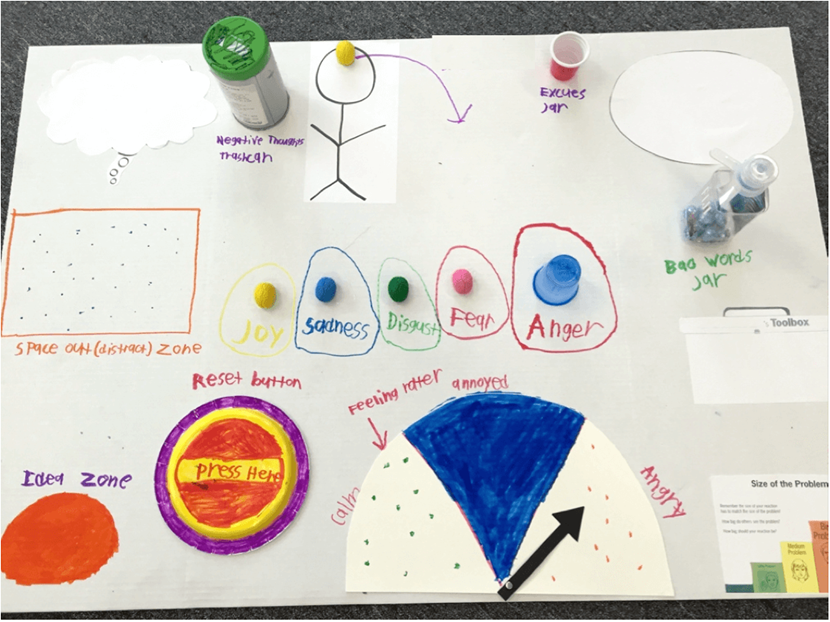
Inside Out was a creative way to give attention to the feelings inside us all. That said, the movie could have done more to help children understand that our feelings are just one part of our larger selves, and that feelings, gone unchecked and without understanding, can wreck havoc in our lives. The focus of Social Thinking is to build awareness of the many parts of our social selves and how our thoughts, feelings, words, and actions affect others and ourselves.









